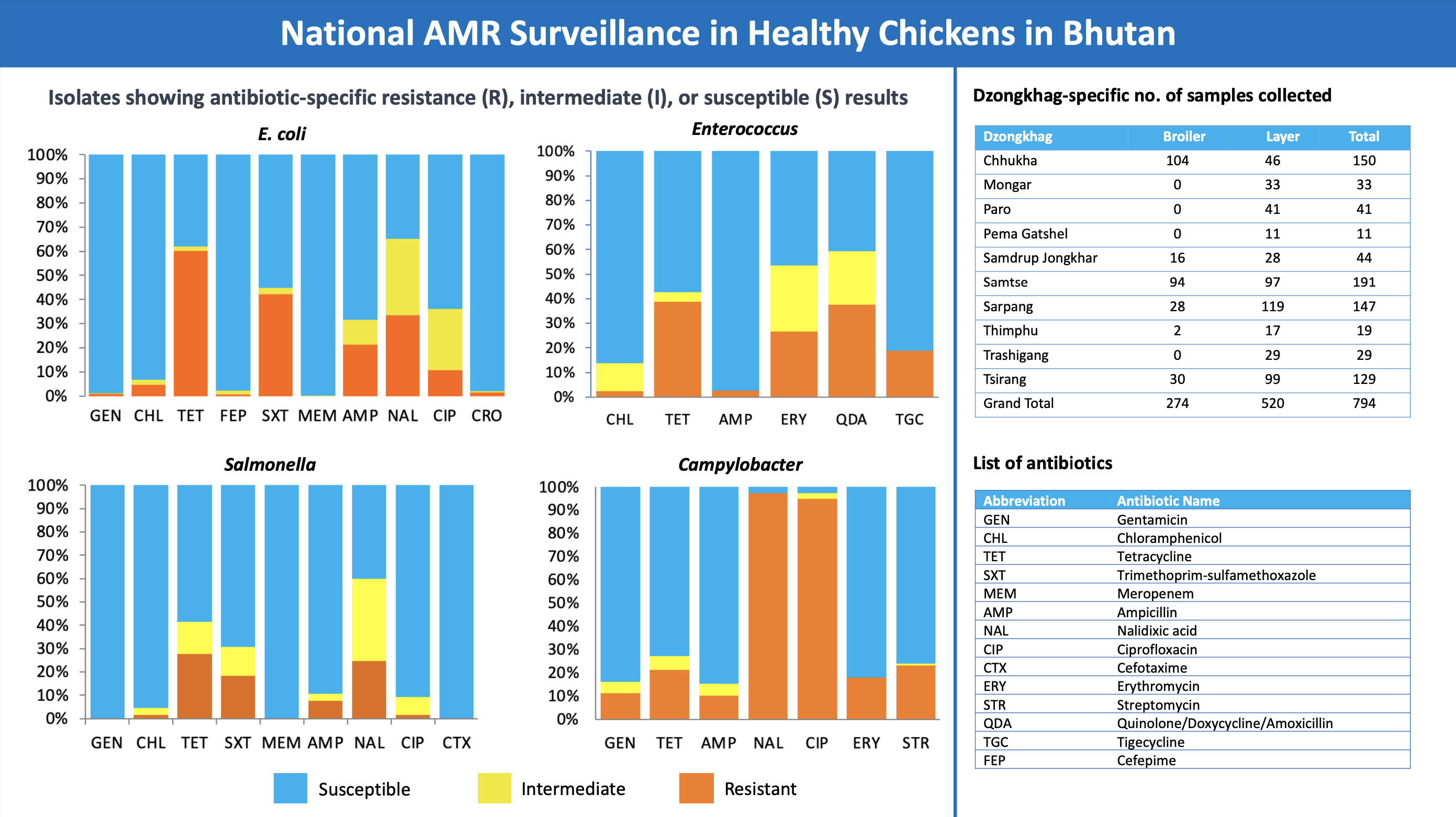A. Introduction
The National Centre for Animal Health, under the Department of Livestock, Ministry of Agriculture and Livestock, Bhutan, was identified as the beneficiary institute for the UK government-based Fleming Fund Country Grant. The grant’s primary focus was to establish a robust foundation for Antimicrobial Resistance (AMR) and Antimicrobial Usage (AMU) surveillance. Key areas of emphasis included enhancing laboratory infrastructure, strengthening human resources, improving surveillance systems, and promoting the formation of a One Health framework for AMR. As part of this initiative, AMR surveillance was conducted in healthy chicken populations, with a particular focus on zoonotic and indicator organisms, including E. coli, Enterococcus, Salmonella, and Campylobacter. The surveillance sites were strategically chosen based on the presence of surveillance site laboratories, prioritizing districts with significant poultry-rearing activities. The National Centre for Animal Health (NCAH), Serbithang, and the Regional Livestock Development Centres (RLDCs) in Tsimasham and Kanglung were designated as surveillance site laboratories.
B. Methods
Between August 2021 and November 2022, a total of 794 caeca samples were collected from healthy chickens in semi-commercial and commercial broiler and layer farms across ten Dzongkhangs in Bhutan. Caecal contents were processed according to established standard operating protocols for the identification of E. coli, Enterococcus, Salmonella, and Campylobacter. Antimicrobial resistance testing was conducted using disk diffusion, following the guidelines set forth by the Clinical and Laboratory Standards Institute (CLSI).
C. Findings
The results of the surveillance revealed the following key findings:
Prevalence: E. coli, Enterococcus spp., Campylobacter spp., and Salmonella spp. were isolated from 91%, 95%, 15%, and 8% of the collected samples, respectively.
Antibiotic Resistance: High levels of antibiotic resistance were observed, particularly in the case of commonly used antibiotics. Notable findings include:
- E. coli, Salmonella, and Enterococcus: High resistance to antibiotics such as Tetracycline and Trimethoprim-sulfamethoxazole.
- Campylobacter spp.: High resistance to Nalidixic acid, Ciprofloxacin, and Tetracycline.
145 total views, 2 views today


